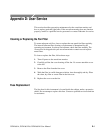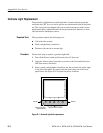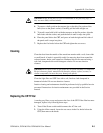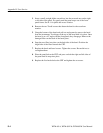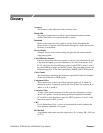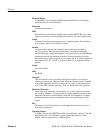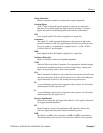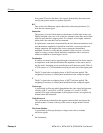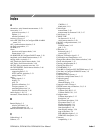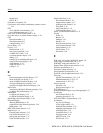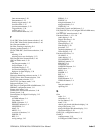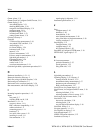
Glossary
WFM 601A, WFM 601E & WFM 601M User Manual
Glossary–3
Linear Distortion
Refers to distortions which are independent of signal amplitude.
Lissajous figure
An X–Y plot in which the signals applied to both axes are sinusoidal
functions. For a stable display the signals must be harmonics. Lissajous
figures are useful for determining phase and harmonic relationships.
LSB
Least Significant Bit. The lowest weighted bit or signal line.
Luminance
The signal (Y) which represents brightness or the amount of light in the
picture. Luminance is the only signal required for black and white pictures.
For color systems, it is obtained as a weighted sum (Y = 0.3R + 0.59G +
0.11B) of the R, G, and B signals.
MSB
Most Significant Bit. The highest weighted bit or signal line.
Nonlinear Distortion
Refers to distortions which are amplitude-dependent.
NTSC
National Television System Committee. The organization which developed
the television standard currently in use in the United States, Canada, and
Japan. Now generally used to refer to that standard.
PAL
Phase Alternate Line. Refers to one of the television systems used in Europe
and many other parts of the world. The phase of one of the color difference
signals alternates from line to line to help cancel out phase errors.
Pb
A color difference signal used in component video systems. It is derived by
subtracting the B (blue) signal from Y.
Pr
A color difference signal used in component video systems. It is derived by
subtracting the R (red) signal from Y.
Receiver Equalization
Refers to recovering the data signal after cable loss. The signal is boosted to
its original standard amplitude.
RF
Radio Frequency. In television applications, RF generally refers to the
television signal after the picture carrier modulation process.
RGB
Red, Green, and Blue. Also referred to as GBR in SMPTE specifications.
The three primary colors used in color television’s additive color reproduc-



